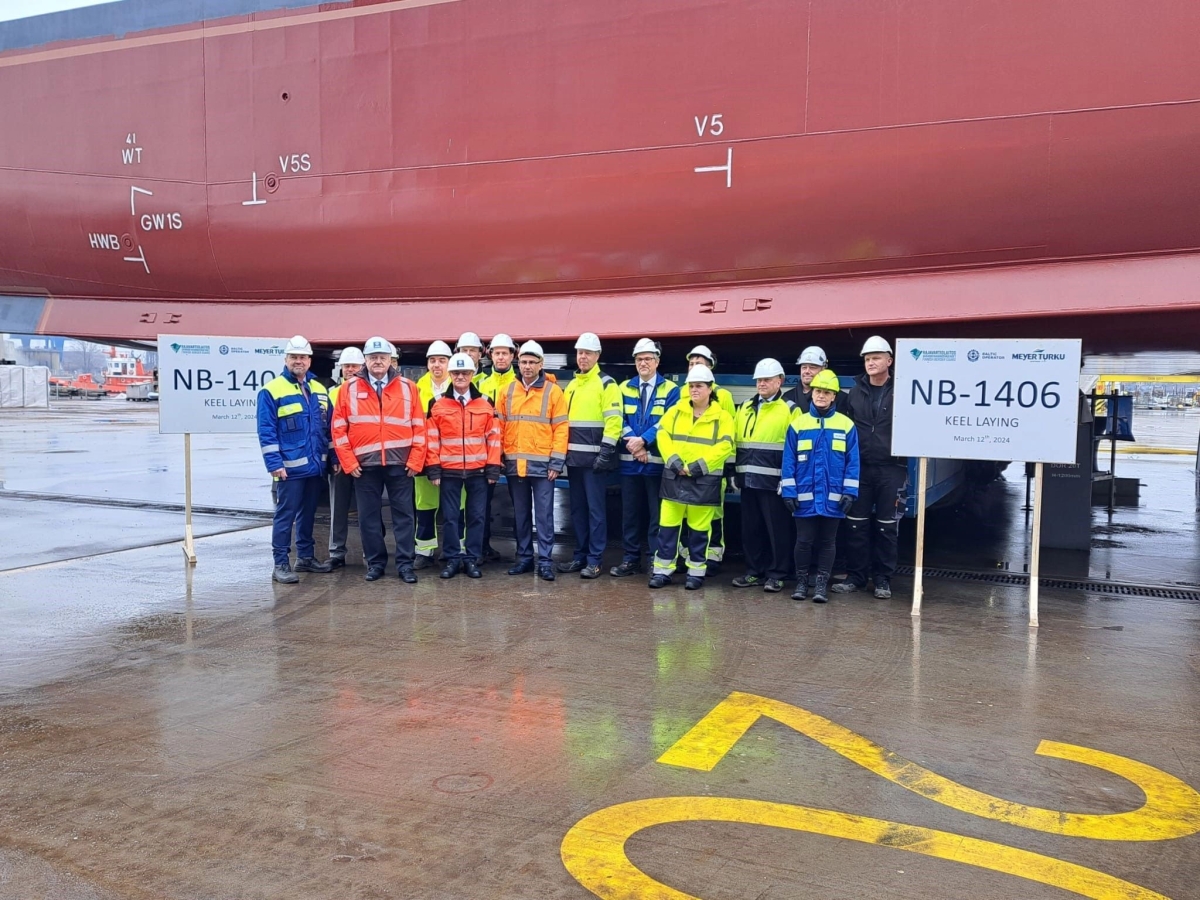
On March 12, the shipyard in Gdańsk held a keel laying ceremony for a patrol vessel for the Finnish Border Guard (Rajavartiolaitos). The Finnish Meyer Turku shipyard commissioned the construction and partial retrofitting of the hulls of two Turva-type patrol ships to the Polish company Baltic Operator.
This is the next stage of
construction of the ships, which are to be handed over to the
ordering party in 2025-2026. The Polish contractor has already
cooperated with the Finnish company in the construction of cruise
ships among others. Representatives of the Meyer Turku shipyard, the
Baltic Industrial Group and Baltic Operator, as well as the staff of
the Finnish Border Guard were present during the ceremony. The
cutting of sheets for the first ship took place on December 12, 2023,
exactly three months earlier.
– Maritime patrol vessels are
built at the facilities of our long-term shipbuilding partners under
the management and in accordance with the quality requirements of
Meyer Turku. The cooperation, which started brilliantly, has now
progressed, on schedule, to a stage where we can celebrate the
achievement of one of the milestones of traditional shipbuilding –
said Tapani Pulli, Deputy Executive Director of Meyer Turku.
The multi-purpose patrol ships will
be 98 meters long, 17.6 meters wide, with a draft of 5.1 meters. They
will be equipped with 12 MW engines. The Turva-type vessels will be a
continuation of the series started by the prototype OPV Turva, which
is probably the world's first coastal defense ship powered by LNG. It
has a displacement of approximately 4,000 tons and 30 crew members.
It reaches a speed of 18 knots. The new patrol ships will most likely
be similar in terms of equipment and size to their predecessor. They
are planned as universal units that, in addition to the tasks typical
of the coast guard (protection of sea borders, combating smuggling
and control of surface vessels), will be adapted to perform rescue
tasks (including SAR operations) as well as eliminate the effects of
oil spills as part of the protection of the water environment and
fire safety.
These new ships have enhanced
border security, emergency response and environmental protection
capabilities, supported by advanced surveillance systems and enhanced
oil recovery capabilities. They will be equipped with
state-of-the-art systems for responding to oil and chemical spills
and will be characterized by high efficiency in collecting water
contaminants. The builder and the ordering party give priority to low
emission and energy efficiency, so that the vessels are also
environmentally friendly. Patrol vessels are to be able to quickly
respond to threats to the region's fauna and flora. In addition, due
to the fact that the Gulf of Finland is one of the busiest maritime
areas in the Baltic Sea, the services need ships capable of
maintaining constant readiness to ensure the safety of people,
property and nature. Thanks to effective and modern ships, the border
guard is to guarantee border security and ensure effective dealing
with even all dangerous situations. Importantly, due to the threat
from Russia and Finland's accession to NATO in April last year, they
will perform important tasks related to the protection of the
maritime border, also monitoring critical infrastructure.
The Finnish Border Guard organized
a tender in spring 2021. which was won by the Meyer Turku shipyard.
The first plans and requirements for the new vessels appeared already
in 2020, and the construction contract was concluded in June 2022.
The Parliament authorized the order of two patrol vessels for the
amount of EUR 448 million, however, the authorities also applied for
financing from the EU Financial Support Instrument for Border
Management and Visa Policy. Let us recall that the planned Turva-type
patrol vessels are to replace older units currently in service. The
Finnish contractor, belonging to the German capital group Meyer
Werft, is the main entity responsible for the construction at all
stages. In addition to Baltic Operator, the Finnish company
Uusikaupunki Workboat is also involved in the project and is
responsible for creating the superstructures.
The authorities plan that both
patrol ships will remain in service until the 2050s.


